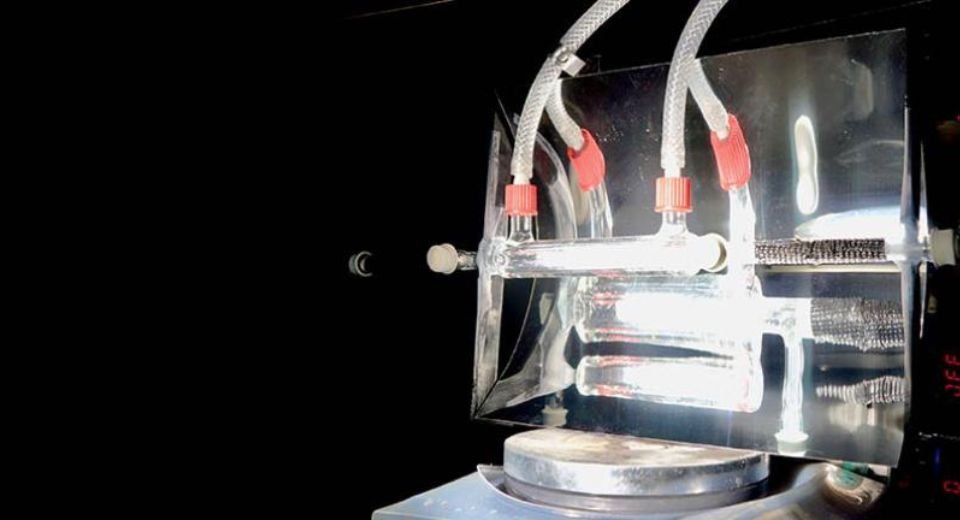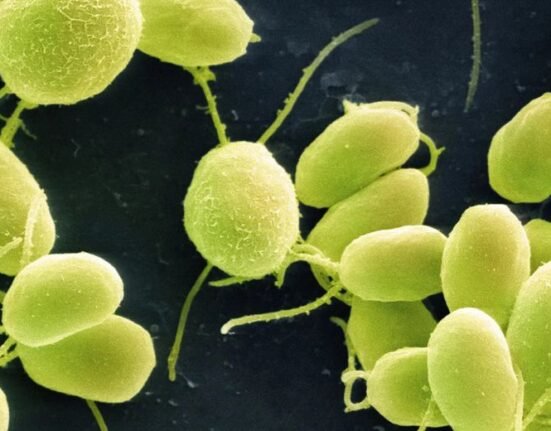HQ Team
February 21, 2025: Cambridge researchers have developed a reactor that pulls carbon dioxide directly from the air and converts it into sustainable fuel, using sunlight as the power source.
The device, a solar-powered flow reactor, uses specialised filters to grab carbon dioxide (CO2) from the air at night, like how a sponge soaks up water.
When the sun comes out, the sunlight heats the captured carbon dioxide, absorbing infrared radiation, and a semiconductor powder absorbs the ultraviolet radiation to start a chemical reaction.
The reaction converts the captured CO2 into solar syngas or synthesis gas. A mirror on the reactor concentrates the sunlight, making the process more efficient.
The reactor takes CO2 directly from the air and converts it into syngas — a key intermediate in the production of many chemicals and pharmaceuticals.
Power cars, planes
The researchers say their approach, which does not require any transportation or storage, is much easier to scale up than earlier solar-powered devices.
The reactor could be used to make fuel to power cars and planes, according to a statement from the University of Cambridge.
The reactor can also be put to use to make chemicals and pharmaceuticals and generate fuel in remote or off-grid locations.
Unlike other carbon capture and storage technologies, the reactor does not require fossil fuel-based power or the transport and storage of carbon dioxide. It converts atmospheric CO2 to fuel using sunlight.
Capture and storage
Carbon Capture and Storage (CCS) has been touted as a possible solution to the climate crisis, and has recently received £22bn in funding from the UK government.
However, CCS is energy-intensive, and there are concerns about the long-term safety of storing pressurised CO2 deep underground, although safety studies are currently being carried out, the researchers said.
“Aside from the expense and the energy intensity, CCS provides an excuse to carry on burning fossil fuels, which is what caused the climate crisis in the first place,” said Professor Erwin Reisner, who led the research.
“CCS is also a non-circular process, since the pressurised CO2 is, at best, stored underground indefinitely, where it’s of no use to anyone.”
Global market
The global carbon capture, utilization, and storage market was valued at $3 billion in 2022, and is projected to reach $10.3 billion by 2032, growing at a CAGR of 13.3% from 2023 to 2032, according to Allied Market Research.
The market is expanding due to global efforts to reduce CO2 emissions, government initiatives, and increasing demand for CO2-enhanced oil recovery techniques.
Technological advancements are also driving offshore oil and gas exploration, promoting gas injection-enhanced oil recovery techniques, which use carbon dioxide for crude oil extraction, the March 2024 report stated.
Researchers from the University of Cambridge said their focus was to develop devices that convert waste, water and air into practical fuels and chemicals.
Photosynthesis
These devices take their inspiration from photosynthesis, the process by which plants convert sunlight into food.
They don’t use any outside power — no cables, no batteries – and all they need is the power of the sun.
The researchers are currently working on converting the solar syngas into liquid fuels, which could be used to power cars, planes and more – without adding more CO2 to the atmosphere.
“If we made these devices at scale, they could solve two problems at once — removing CO2 from the atmosphere and creating a clean alternative to fossil fuels,” said first author Dr Sayan Kar from Cambridge’s Yusuf Hamied Department of Chemistry.
“CO2 is seen as a harmful waste product, but it is also an opportunity.”
Make your own power
When scaled up, the researchers say their reactor could be used in a decentralised way so that individuals could theoretically generate their fuel, which would be useful in remote or off-grid locations.
“We can build a circular, sustainable economy – if we have the political will to do it,” Reisner said.








